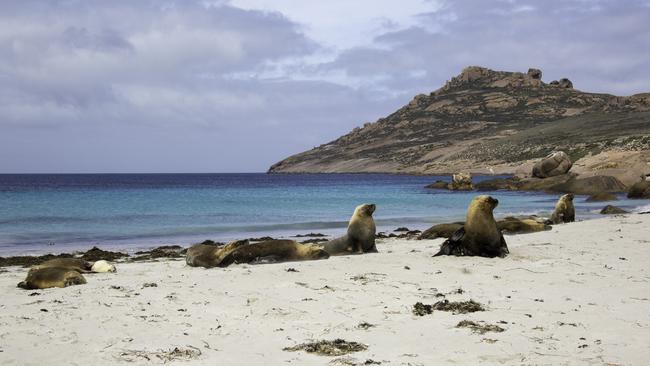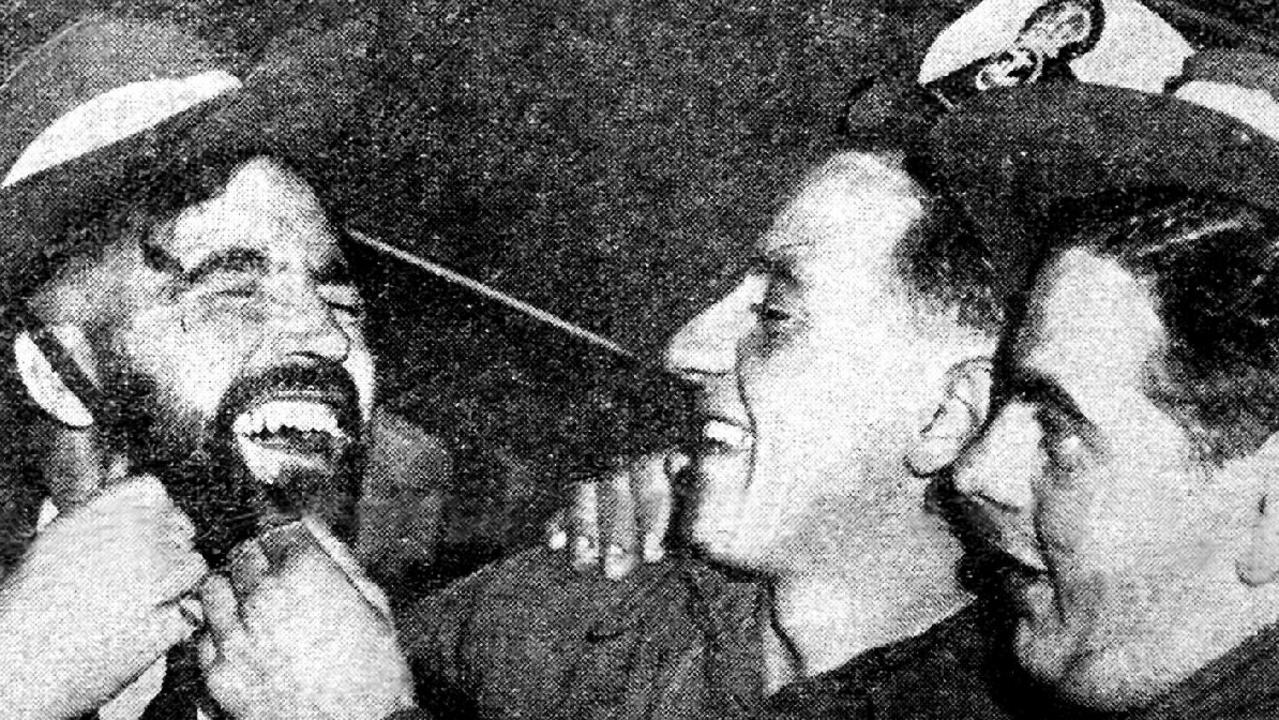Peter Clements: Kangaroo Island Mayor tells oil giant Statoil to back off, no drilling in The Bight
KANGAROO Island would bear the full brunt of an oil spill from deep-sea oil drilling in the Great Australian Bight and has everything to lose, the mayor of the island writes.
Opinion
Don't miss out on the headlines from Opinion. Followed categories will be added to My News.
- Petrol conference in Adelaide, protest in Norway
- Bid to UN for World Heritage status for Bight
- Sea Shepherd shares wildlife photos to protect seascape
- Documents show BP suggested a spill could be good for businesses
KANGAROO Island Council is now one of seven coastal local governments opposing the Norwegian owned Statoil’s plans to drill for oil in the Great Australian Bight, with Alexandrina Council voting its opposition just last week.
We on Kangaroo Island have been fighting against this industry establishing itself for the past six years and for good reason. Kangaroo Island would bear the full brunt of an oil spill from deep-sea oil drilling in the Great Australian Bight and has everything to lose. Kangaroo Island is the jewel of South Australia’s tourism industry and its produce trades on the island’s clean green reputation.

The Norwegians are a very sophisticated people and they appear to value a social license to do business in their own country, a far cry from the way business is done in Australia.
I will be telling the oil giant Statoil and its shareholders about the growing community opposition when I attend its annual general meeting in Stavanger, Norway, this week and will implore the company to quit its plans to drill in the deep, rough and remote waters of the Great Australian Bight, just as BP and Chevron have already done.
Incredibly this week the southern ocean recorded wave heights of 23 metres (equivalent to an eight-storey building) with the recent Antarctic surge. The oil industry’s spin that relies on the premise that the industry has successfully operated in Bass Strait for decades with only minor incidents forgets the fact that operating fixed oil production platforms in Bass Strait’s shallow water and moderate seas is far different than operating in ultra-deep water with catastrophic sea conditions using dynamically positioned (floating) platforms.

A spill would be devastating for South Australia’s $442 million fishing industry and its tourism industries in coastal regions, worth more than $1 billion. The two industries employ more than 10,000 full-time positions.
The Great Australian Bight waters are deeper, more treacherous and more remote than the Gulf of Mexico. Statoil’s former Bight partner BP’s own oil spill modelling showed a spill from an ultra-deepwater well blowout in the Great Australian Bight could impact anywhere along all of southern Australia’s coast, from Western Australia right across to Victoria through Bass Strait to NSW and around Tasmania. A spill could hit Adelaide in 20 days and could hit Port Lincoln and Kangaroo Island in 15 days.
BP’s statement that a major oil spill in The Bight would be good for the South Australian economy is too unbelievable to contemplate and demonstrates the arrogance of some companies in this industry.
We have nothing against Statoil as a company that’s doing incredible work in the renewables sector with a large part of their investment portfolio in hydro and other renewables. I will tell Statoil that we respect and applaud their short- and long-term plans for renewable energy projects but we don’t want its oil rigs in our southern waters.

The local governments opposed to oil and gas exploration in The Bight now include Kangaroo Island, Yorke Peninsula, Victor Harbor, Alexandrina, Holdfast Bay, Yankalilla and Elliston. These local government authorities are part of the three separate peninsulas along the SA coastline and it is expected that this number will grow to include councils which are not on the coast but recognise the importance of the potential loss to South Australia’s branding.
As well, local governments join a growing opposition that includes businesses, Traditional owners, tourism and fishing operators, surfers as well as conservationists.
While I attend Statoil’s AGM in Norway, communities will voice their opposition to oil and gas exploration in The Bight at oil and gas lobby group APPEA’s annual conference when it opens in Adelaide on Tuesday.

If we can’t convince Statoil to leave our Bight alone, we still won’t be beaten.
The victims of BP’s Deepwater Horizon disaster are ready and waiting to inform the people of South Australia of the economic catastrophe and multi-generational legacy left by BP in the Gulf of Mexico.
The general public needs to know that there is no established offshore oil and gas industry in South Australia to deal with a disaster. More than 6800 boats were involved in the Gulf of Mexico clean-up but the South Australian Oyster Growers Association says that SA and neighbouring states do not have that many vessels and probably only 20 could operate safely in the waters where Statoil plan to drill.
The Great Australian Bight’s pristine waters are the world’s most important nursery for the endangered southern right whale. It´s a haven for 35 other species of whales and dolphins, including humpback, sperm, blue and beak whales. It’s also Australia’s most important sea lion nursery. The Bight also supports seals, orcas, giant cuttlefish, great white sharks, some of Australia’s most important fisheries, and migratory seabirds Australia has international obligations to protect.
What’s more is that 85 per cent of the marine species in The Bight are found only in these waters. Why on earth would you want to spoil this?
Peter Clements is the Mayor of Kangaroo Island.


